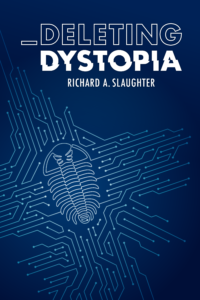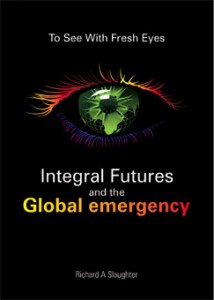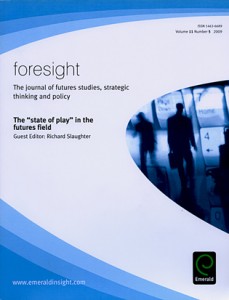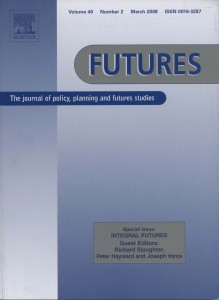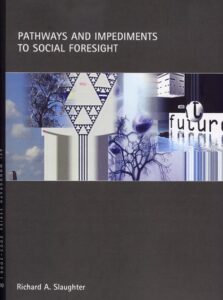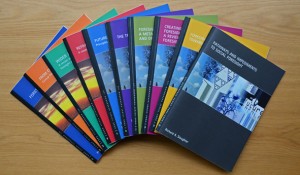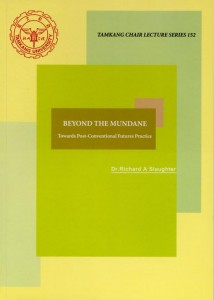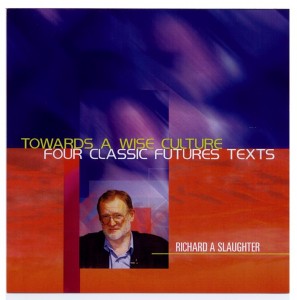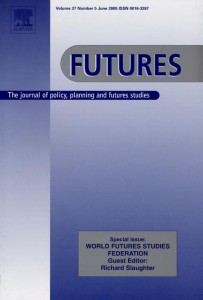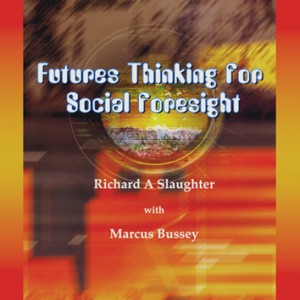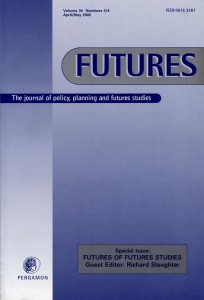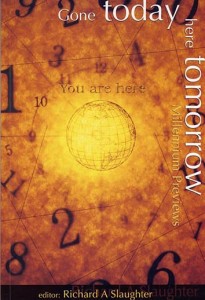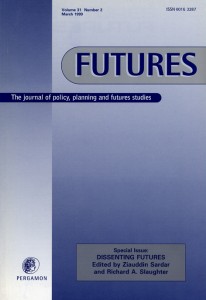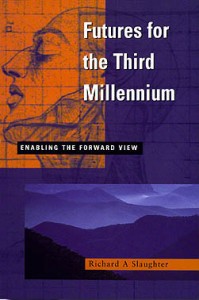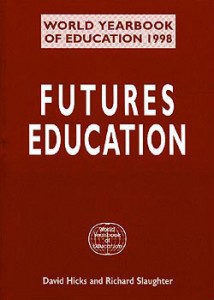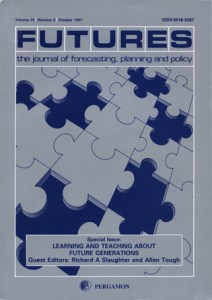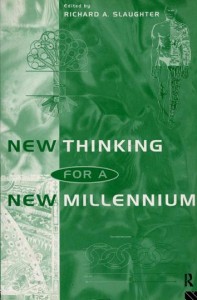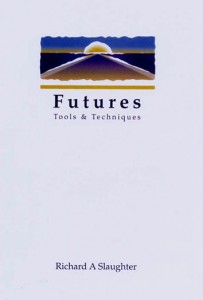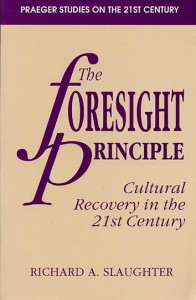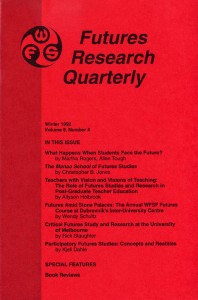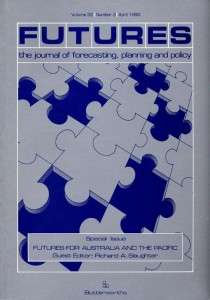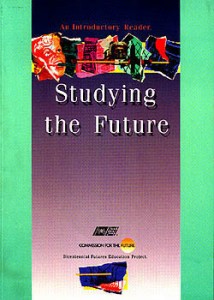Deleting Dystopia – Re-asserting Human Priorities in the Age of Surveillance Capitalism
This book presents a critical analysis of the IT revolution in the early 21Century and, in so doing, seeks to account for the way that innovations initially regarded by early pioneers as liberating and helpful have become absorbed into an oppressive global system that appears more dangerous and invasive with each passing year. It’s not a particularly easy call since this is a huge subject. Moreover, many of the services that the system provides appear, on the surface, to meet authentic human needs. We tend to forget that in order to make each and every device appear desirable, every item of consumer hardware (smart phones, tablets, screens and related devices) has been subjected to purposeful design and testing. The whole effort is backed by pervasive high-end marketing that has, over several decades, sought to construct entire populations as passive consumers. Read more…
A short video produced at the University of Southern Queensland featuring the author, project director Luke van der Laan and images from the book can be found here: https://player.vimeo.com/video/635780403.
This book is available for free download: here. Read the review: here
Descent Pathways Editorial Introduction (2014)
Today, more than forty years after the Club of Rome published the Limits to Growth (Meadows et al., 1972), a renewed groundswell of awareness appears to be building in relation to humanity’s overshoot of numerous global limits. While the Limits to Growth thesis drew the ire of champions for the established economic order, evidence supporting its veracity continued to mount. Growing appreciation for the collective socio-ecological challenges faced as we converge on planetary limits is accompanied by speculation that some sort of civilisational collapse could be immanent. Read more…
The Denial of Limits and Interior Aspects of Descent (2014)
The primary purposes of this paper are as follows. Part one seeks to re-examine the role of denialism in the context of proposals advanced through the much-abused Limits to Growth (LtG) project. The wide-ranging consequences look increasingly like a ‘global trap’ for which humanity is manifestly unprepared. The paper suggests, however, that that moving from ‘collapse’ narratives toward those focused on ‘descent’ opens out new conceptual and practical spaces. Part two uses three sets of criteria (domains of reality, worldviews and values) to characterise some of the interior human and social aspects of the ‘denial machine.’ It uses these criteria to address some vital, but currently under-appreciated ‘interior’ aspects of descent. Finally it considers examples of promising work and concludes by advancing suggestions about ways forward in the light of the ‘global emergency.’ Read more…
To See With Fresh Eyes: Integral Futures and the Global Emergency (2012) Foreword by Andy Hines; + Contents
This work presents the rare opportunity to witness the evolution of a field through the eyes of one of its principals. And it is our good fortune that he is also one of its most personable and gifted storytellers. The essence of the gift, in my view, is the unique ability to bluntly tell a difficult story with sensitivity and compassion. Tough issues are engaged with the necessary penetrating and no-holds-barred insight, but with a humanity that helps us to stay engaged as well. An onslaught of challenges without this compassion would be difficult to take. To the contrary, we leave his work with a clear sense of challenge, but accompanied by a sense that something can be done, and we as individuals have a contribution to make. Read more…
The Introduction is here. A review for APF Compass by Daniel Pesut is here. The following short article was written in 2018 for an issue of the WFSF on line magazine Human Futures. A look back at the above book leads to a brief discussion of where themes from it have subsequently led. Read more…
Education for the 21st Century Revisited (2011)
During the process of preparing Education for the Twenty First Century Revisited a couple of things struck me quite forcefully. One is that the diagnosis that Hedley Beare and I sought to present in the early 1990s remains as pertinent today as it was then. Our critique of the industrial worldview, our concerns about directions in Western culture and our aspirations for schools, teachers and students all remain valid today – or so it seems to me. Continue the Introduction.
Reflections and Futures Ed Rationale here.
The Biggest Wake-Up Call in History (2010)
Introduction and Contents. Standing behind the familiar surfaces of everyday life – our family, our work, the travel we undertake, our preferred recreation and so on – a single question confronts us all, rich and poor, in every country in the world – how should we respond to a world slipping deeper into crisis each and every year? It’s a question that vast numbers of people are aware of and to which there are at least two fundamental responses that we can label ‘passive’ or ‘active.’ Read more…
Reviews are here. Author reflections from a special issue of On The Horizon, 2013, on this work are here. An award for a Most Important Futures Work of the Year (2012) from the Association of Professional Futurists is here.
The State of Play in the Futures Field (SoPiFF, 2009)
Introduction and Contents. The notion that the State of Play in the Futures Field (SoPiFF) was a topic worth considering emerged from a conversation with Sesh Velamoor, Director of the Seattle-based Foundation for the Future (FFF), at a 2006 conference at Tamkang University in Taiwan. The Foundation itself was established by philanthropist Walter Kistler and charged to support disciplined work regarding prospects for humanity’s long-term future. It was Kistler who observed that “humanity is like a vehicle going down a steep slope without a steering wheel, without brakes, and without a driver” Read more…
Integral Futures Methodologies (2008)
Editorial Introduction. As is well known the futures field emerged during the mid-Twentieth Century because people could see that, far from there being any single ‘destination’ for humanity, there were instead many possible futures, some of which were not greatly to their liking. ‘Thinking ahead’ became more than a personal pastime or indulgence. It became an imperative – at least to those who were paying attention. While some remained ‘asleep’ in the routines and assumptions of everyday life, others were ‘waking up’ to the implications: humanity might be headed for the stars or its own early extinction. Read more…
Integral Futures Voted by members of the APF as One of the Most Important Futures Works of the Year (2008) Read more…
Pathways and Impediments to Social Foresight (2006)
AFI Monograph Series (2003-6) A summary of each monograph is here
Integral Futures: Breadth Plus Depth Equals Foresight with Insight. (In-depth review of the monograph series by Andy Hines.) The Australian Foresight Institute has brought a collection of essays that provide a wonderful introduction into the realm of integral thinking as being brought into foresight and futures studies. They suggest a broader, more-encompassing framework for understanding the future and providing context for what’s going on today. Read more…
Beyond the Mundane (2007)
Overview here
For some time there has been a need within Futures Studies (FS) to develop methods that go beyond the dominant empirical tradition. For many years there has been a near–exclusive emphasis on understanding the external world ‘out there’. But as time has gone by, so it has become clear that our ability to understand the world ‘out there’ crucially depends on an underlying world of reference that is ‘in here’. Understanding the near–future environment calls for a combination of ‘inner’ and ‘outer’ views which, for example, give as much credence to judgement as to calculation. Read more…
Pathways to Foresight – A Seven Part DVD Series (2006)
Introduction by Jay and Olgy Gary
If you thought that futurists are only interested in the external worlds of gadgets or technology, take another look. Foresight International and Bimillennial Press are pleased to present Pathways to Foresight. Pathways is a 7-part DVD study series, perfect for individual study or a range of classroom uses. It is the first teaching series to focus on critical and integral futures, showing how you can use futures methodologies to probe beneath the surface of change, in both the personal and social worlds. Read more…
Towards a Wise Culture: Four Classic Futures Texts (2005)
The purpose of this CD-ROM is to make available four key futures texts, along with some of the supplementary materials that go with them. The four texts are:Recovering the Future (1988); The Foresight Principle: Cultural Recovery in the 21st Century (1995); Futures for the Third Millennium: Enabling the Forward View (1999) and Futures Beyond Dystopia: Creating Social Foresight (2004). The motivations for creating this resource are varied. One is that I wanted to make the material available to students and others at a reasonable cost. Another is that some of it is out of print and thus hard to obtain. A further reason is that 2005 marks thirty years since I left Bermuda with my mind in uproar and my heart heavy at the version of ‘progress’ that I’d seen clearly inscribed on that vulnerable and abused island. Read more… Quartet. Overview by Alex Burns here.,
World Futures Studies Federation (2005)
Editorial Introduction. Why was the WFSF created? A look back at the origins of the WFSF show that, in contrast with its larger US cousin, the WFS, the WFSF was created by people who dissented from the emerging status quo in the world and who wished to ‘open up’ the domain to cultural pluralism. In his account of the first fifteen years Bart van Steenbergen quotes Robert Jungk on the emergence of new futures techniques. He said that: ‘these powerful tools should not be restricted to a technocratic elite, for the future belongs to all of us and for that reason it is absolutely essential that future research is internationalised and democratised as soon as possible’. Later Steenbergen adds that ‘there was full agreement that it should be a genuine international organisation and not one dominated by the Western world.’ Read more…
Futures Thinking for Social Foresight CD-ROM (2005)
Preface and Introduction are here.
Futures Thinking for Social Foresight (2005, 2012)
This publication provides teachers and students with a practical overview of futures studies. It also acts as a source book for teachers and others looking for activities and material that will help to develop futures literacy in their students. The long-term goal is that of creating social foresight. To these ends it offers a tapestry of sections that weave patterns via ideas and practical action. Read more…
Futures Beyond Dystopia: Creating Social Foresight (2004) Foreword by Ken Wilber
Ah, to see the future, yes? Omen readers, entrail interpreters, soothsayers, psychics and scientists, all want a glimpse of tomorrow. Well, so do I, which is to say, we are all human. One of the great difficulties with Futures Studies is that it is the future of human beings we are particularly interested in, and in order to understand the future of humans, we obviously must understand their present. For us to better understand what might be, we have to better understand what is, and odd as it sounds, our understanding of the what is of humanity has, until recently, been something of a disaster. But without an adequate map of the present, our maps of tomorrow simply amplify and exaggerate the gaps in today’s understanding. The point is that to better forecast tomorrow, we must better understand today Read more…
General Introduction here. Author reflections here. Exceptionally generous and insightful review by Ian Lowe here…
Introduction to Futures Beyond Dystopia The world we are living in is, in many respects, an illusion. Or, to put it more precisely, it is founded on illusions. That is, much that is conventional, taken-for-granted, the ‘way things are’ does not stand up to close examination. The affluent Western world has become entranced by its wealth, its success and its ever more compelling technological prowess. But it pays little more than superficial attention to the consequences of its spiralling demands, to the ways it constantly transfers costs elsewhere and ‘elsewhen’ into the ever-receding future. Short-term thinking has become the norm and it protects us from ever taking seriously our collective attempts to consume the future. Read more…
Futures of Futures Studies (2002)
Editorial Introduction. For those who have been associated with the field of Futures Studies (FS) for some time the outlook early in the third Millennium is ambiguous. On the one hand there are all the globe-spanning activities that make it a stimulating and ever more productive area of work. On the other is a sense that, by now, it should have done more, gone further. This ambiguity, however, lies as much in the minds of those who are interested in the progress (or lack of it) of FS as it does in the external evidence. For if there has been one key lesson in recent decades it is this: the world ‘out there’ is framed, understood and conditioned through the world ‘in here’. It is a significant step toward disciplinary maturity for so many futures practitioners to have discovered this and to be applying it in many different ways. Read more…
Gone Today, Here Tomorrow: Millennium Previews (2000)
The year 2000 has long been seen as a milestone in Western history and consciousness, a divide imposed by the Gregorian calendar that heralds the end of one era and the beginning of another. No matter that other cultures and civilisations have different calendars and account for the passage time in other ways and from other starting points. The universalising influence of Western civilisation around the world means that, in one way or another, people everywhere will be affected by this transition.The end of the 20th century brought forth a flood of books and TV programs that attempt to come to grips with the recent past: what was the 20th century and what, exactly, does it mean? These are not simple questions. Read more…
Dissenting Futures (1999) Edited by Zia Sardar and Richard Slaughter
Rationale. Futures Studies (FS) emerged in the rich West and many, if not all, if its early expressions were culture-bound in ways that it practitioners seldom acknowledged. A whole tradition of futures work emerged from this starting point; a tradition that was predominantly empirical, embodied notions of predictability and control and entirely overlooked that other voices, other cultures, might have anything worthwhile to contribute. In other words, the type of FS emerging from this Western tradition all-too-often became an instrument of cultural hegemony. Read more…
Read more on responsible dissent here.
Futures for the Third Millennium: Enabling the Forward View (1999)
Foreword, Richard Bawden here.
Intro, Acknowledgements & Outline. Futures for the Third Millennium does not attempt to anticipate, forecast or predict the unfolding of the next thousand years. It is not a macro history of the future; rather, its focus is on the creation and use of futures-relevant knowledge – knowledge that can help individuals, organisations and, indeed, humankind as a whole, navigate within this complex and ever-changing environment. Continue here…
Author reflections here.
World Yearbook of Education (1998)
Introduction by David Hicks and Richard Slaughter.
The World Yearbook of Education 1998 takes up the topic of Futures Education. The book is arranged in three parts. Part one deals with the foundations of futures education. Here seven futurists from the USA, Canada and Australia consider themes such as: understanding the field of FS, the nature of global change, the knowledge base of FS, non-western perspectives, listening to future generations and feminist perspectives. Part two looks at the practice of futures education in a range of contexts from early childhood to post-graduate studies. Read more…
Learning and Teaching About Future Generations (1997)
Editorial Introduction. This special issue of Futures contains a number of papers from an invitational conference on ‘Learning and Teaching about Future Generations’ which was held in Toronto in October 1995. The conference was funded by Katsuhiko Yazaki, the benefactor and founder of the Kyoto-based Future Generations Alliance Foundation (FGAF), and organised by Allen Tough. Over the past few years the Foundation has held many meetings throughout the world and has pursued the future generations cause with dedication and vigour. Mr. Yazaki has been greatly assisted in this work by two distinctive colleagues: Korean scholar Tae-Chang Kim and Buddist priest Kido Inoue. Sometimes together, sometimes separately, these three men have travelled the world to support, encourage and participate in a wide range of activities designed to raise the profile of future generations thinking. Read more…
The Knowledge Base of Futures Studies Vols. 1 – 3 (1996)
Vol 1 Foundations. The concept of a ‘knowledge base’ is problematic in postmodern conditions in so far as it is identified with an unchanging social and epistemological order, and is hence presented as a cultural or epistemological fait accompli. However, that is not what is attempted here; rather, Volume 1 of the Knowledge Base series provides a number of starting points for enquiry. Read more…
Vol 2 Organisations, Practices, Products. Volume One of the Knowledge Base presented various aspects of the foundations of futures studies. Volume Two builds upon these foundations in several ways. First, it presents an overview of a number of futures organisations. Clearly this is only a sample, yet it provides a fascinating overview of their rationales and modus operandi. A very substantial section on futures methods and tools follows. It explores some of the ways that futures thinking can be operationalised. The theme of images and imaging processes follows. The final section takes up the theme of critical practice. In all, Volume Two is concerned with the applications of futures thinking to ‘real world’ contexts, situations and needs. Read more…
Vol 3 Directions and Outlooks. Volume Three is organised around ‘directions and outlooks’. These notions provide many of the resources we need to engage in the task of moving the futures agenda forward in the 21st century. The insights presented here embrace many polarities: East and West, North and South, male and female, theory and application, criticism and speculation, and more. The point is that ‘directions and outlooks’ provide a set of understandings and propositions that serve to illuminate the emerging near-term future landscape. Read more…
The Knowledge Base of Futures Studies Vols 1 – 5 Pro Edition CD-ROM (2005)
Since the original introduction to the 1996 edition was written the KBFS went through two printed editions and a Millennium Edition CD-ROM (2000). The latter was quickly taken up around the world and used in a variety of contexts. Its value as a resource in post-graduate FS courses was demonstrated at the Australian Foresight Institute. In fact the first course unit (Intro to the KBFS) was based on it. As Prof Wendell Bell kindly observed of the hard copy edition, ‘for many decades to come these volumes will remain the standard by which all other work in the field will be judged.’ Others called the CD-ROM a ‘one stop shop’ and ‘an ideal introduction to the field.’ Read more…
New Thinking for a New Millennium (1996)
The end of one millennium and the beginning of another is a time of great cultural and symbolic significance. Inevitably there arises the difficult task of looking back at the last millennium and attempting to come to terms with its long and tangled history. Again, there is the equally difficult task of shifting our view out of what has been to what may be. It is fascinating to note how relatively well equipped we are for the first task, yet how poorly for the second. Yet as the 20th century comes to a close there exists a brief historical opportunity to redress the long-standing temporal bias in Western culture toward the past. I am in no way anti-historical. Yet it strikes me as odd that our universities are equipped with many Departments of History and legions of historians but very, very few futurists. H. G. Wells complained of this in a 1932 BBC address called Wanted, Professors of Foresight. Read more…
Futures Concepts and Powerful Ideas (1991, 1996, 2000)
Futures Concepts and Powerful Ideas originally took two years to develop and produce. It was not intended as a teaching kit as such (though it has numerous uses in education) so much as a resource pack intended for the use of anyone wishing to understand or utilise some of the conceptual riches of the futures field. While the public continues to equate futures with prediction, and while the high ground of futures work often seems to be associated with prestigious think-tanks, gee-whiz tv shows and the convocations of professional futurists, I have increasingly taken the view that the most broadly useful aspects of the field lie elsewhere. That is, in the potential of its conceptual resources to stimulate and enable certain crucial shifts of understanding and perception among wider populations. Read more…
Futures Tools and Techniques (1995, 2002)
For some time there has been a need for a practical workbook of futures tools and techniques. This booklet is an attempt to fill that need. The material it contains has broad applicability not just across the school curriculum but also in tertiary and other contexts. Given this range, I have tried to present material that is structurally simple but capable of being modified in various ways. For example, teachers of young and low-ability students will need to simplify both the content and the language of some sections. On the other hand, most of the exercises can be elaborated according to need. In all cases the book provides starting points for a wide variety of cross-curricular and interdisciplinary work. Read more… Review by Marcus Bussey here…
The Foresight Principle: Cultural Recovery in the 21st Century (1995)
Foreword by Hazel Henderson. It is a pleasure to welcome The Foresight Principle and its lucid, comprehensive map of the growing futures research movement. Richard Slaughter is a futurist par excellence as well as a valued colleague. This book fills a deep need in today’s cultural transitions and confusions – expanding the contexts for further human development. Change is occurring at many levels: personal, community, corporate, national, and in ecological and global restructuring processes. Richard Slaughter is a superb teacher. He has provided a broad, coherent framework for thinking about all those dimensions of our current transition from the dominant culture of the past three hundred years based on instrumental rationality, reductionist science, and the efforts to create an earthly paradise of material abundance. Slaughter recognises the achievements of this era and its ideology of industrialism and summarises the new problems its limited worldview, short-term philosophy and epistemology have created – from ecological destruction to social pathologies and personal angst. Yet he uses all this as prologue to a careful assessment of our human potentials and possibilities for social innovation to transcend our current dilemmas. I subscribe to precisely this kind of disciplined and honestly normative futures research. Read more…
Preface, introduction here. Author reflections here. Summary of The Foresight Principle by Jan Lee Martin here. Review by Linda Crowl here..
The Knowledge Base of Futures Studies (1993)
Editorial Introduction. The study of futures may be problematic in some respects. But this is not a cause for concern. Over the last few decades, significant realms of uncertainty have opened up beneath science, mathematics and the structures of the material world, even as a new interpretative sophistication has developed across the humanities. The world is no longer as simple as it was. But this is no bad thing. Our new understanding of the social construction of reality, of cultural editing, of worldview analysis and the formation and dissolution of so-called ‘disciplinary paradigms’ has provided many potent insights. It is a context in which futures studies (fs) has a clear, and I would argue, a central role to play. Its knowledge base is no more challenging, no less soundly based, than many other fields. Read more…
Education for the Twenty-First Century (1993)
Introduction by Hedley Beare and Richard Slaughter. This book grew out of a common and deep-seated concern. As colleagues on the same faculty, we discovered that we were both using parallel and complementary materials while caught up in a flurry of talks, speeches, and workshops with educators who were worried about some of the trend lines in school reform, about the way young people think of their own future, and about some of the relatively simplistic educational reforms being advocated, often by people with scant comprehension of modern educational practices. Read more.. Foreword by Hon Barry Jones here. Full outline here. Read the review by Lael Pepper here..
Futures Studies and Higher Education (1992)
Editorial Introduction. It is at least twenty-five years since the first university approved futures courses were taught. Later, such courses proliferated – only to fall back subsequently. The reasons for this are not well understood. What is certain is that the legitimacy of futures work at the tertiary (university/college) level is not yet fully established. This, in spite of clear evidence that such courses can be rigorous, popular and successful. What strikes one here of course is the old problem of ‘temporal lag’. Read more…
Futures for Australia and the Pacific (1990)
Editorial Introduction. This special issue of Futures contains the major papers from a colloquium on Futures for Australia and the Pacific held at the University of Melbourne in October 1989. It brings together – perhaps for the first time – the considered work of some of the country’s most thoughtful and forward-looking scholars. Two major themes emerge from the colloquium: the need to adapt to changing global conditions and the associated need for Australia to begin to engage in broad-spectrum futures scanning. Both have now become structural necessities. Read more…
Studying the Future (1989)
Preface by Gerry Tickell
This publication responds to a clear need, the need for a general introduction to an area of curriculum development which remains unknown or exotic for most teachers. Its forerunner was a collection of articles assembled for teachers in the Bicentennial Futures Education Project lighthouse schools. The general response was so positive that we decided to develop the collection further and present it to a wider audience. Read more…
Recovering the Future (1988)
Recovering the Future represents a series of explorations within the field of Critical Futures Study. The world ‘critical’ is important and can be explained by considering the title. The phrase ‘recovering the future’ raises an immediate question: in what sense can that which has by definition, not yet happened, need or permit recovery? The future is, in principle, open. Yet for something to be recovered it must first be lost. There is therefore a second question: what is it about the future that has been lost? Read more…
Author reflections are here.
Birds in Bermuda (1975)
Preface by David B. Wingate (Government Conservation Officer) It has been so long since the last illustrated book on Bermuda birds was published that a whole new field of artistic expression in the form of colour photography has had its birth and evolution in the interim. Indeed, this volume is the first compendium of Bermuda bird photographs ever produced. The demand that exists for such a book can hardly be overstated. Every year, thousands upon thousands of our tourist visitors have been inspired by Bermuda’s natural beauty. Yet despite the fact that birds comprise an important part of that beauty, there has been no publication available which could truly be said to capture the essence of our bird life. Richard Slaughter has at last provided a book that will fulfil this role with distinction. It is a truly professional job, combining the latest in photographic techniques with a considerable degree of artistic talent. Read more…
A Beautiful Book on Birds – Review by Marion Robb
Richard Slaughter’s beautiful book on Birds in Bermuda is a landmark – or if you like, a high water mark – in the catalogue of published lore about our waters, woods and wildlife. It is a book to read through in an hour, to leaf through frequently for its remarkably intimate colour photographs, and to ponder over a lifetime for its thought-provoking message. Read more…

